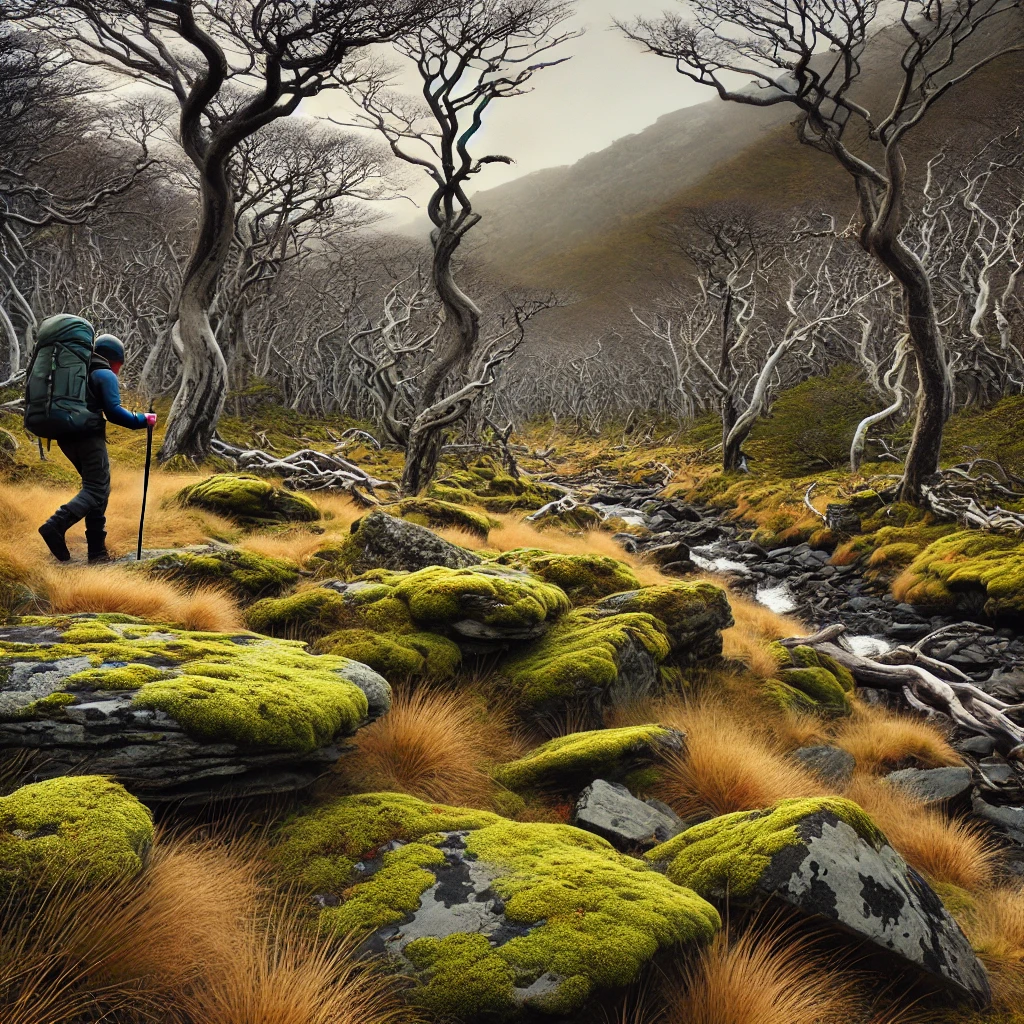ChatGPT:
Ushuaia, Argentina: Origin, History, and Development
Overview:
Ushuaia, often referred to as “the southernmost city in the world,” is located on the southern tip of Argentina, in the Tierra del Fuego archipelago. Nestled between the Martial Mountains and the Beagle Channel, it is known for its dramatic landscapes, unique wildlife, and status as a gateway to Antarctica.
Origin and Early History
• Indigenous Peoples:
The area around Ushuaia was originally inhabited by the Yámana (or Yahgan) people, who lived in the region for thousands of years. They were skilled navigators and hunters, adapted to the harsh environment, and relied on fishing and seal hunting.
• European Exploration:
In 1520, Ferdinand Magellan passed through the nearby strait that would later bear his name, marking the beginning of European exploration. Charles Darwin also visited the region during his journey on the HMS Beagle in the 1830s, bringing attention to its rugged beauty and indigenous peoples.
• Naming:
The name “Ushuaia” comes from the Yámana language, meaning “bay that penetrates to the west.”
Colonial and Missionary Era
• First Settlement:
Ushuaia’s first permanent settlement was established in the 1860s by Anglican missionaries led by Thomas Bridges. They aimed to convert the Yámana people to Christianity and help them adapt to European ways of life.
• Impact on Indigenous Communities:
The arrival of settlers and missionaries disrupted the Yámana’s traditional lifestyle. Diseases brought by Europeans, combined with displacement, led to a dramatic decline in their population.
Development into a City
• Establishment of Ushuaia:
In 1884, the Argentine government formally established Ushuaia to assert sovereignty over Tierra del Fuego. The settlement was part of broader efforts to solidify Argentine claims over the southern region, particularly as tensions with Chile over territorial disputes increased.
• Penal Colony:
In 1902, a prison was constructed in Ushuaia, becoming one of its most notable historical landmarks. The penal colony housed some of Argentina’s most dangerous criminals. Prisoners were put to work building infrastructure, which helped the town grow. The prison operated until 1947 and is now a museum.
Modern Development
• Economic Growth:
Ushuaia developed into a small port town, with fishing and lumber industries sustaining the local economy. In the late 20th century, it began to grow due to tourism and government incentives to encourage settlement.
• Tourism:
Ushuaia became a major tourist destination due to its location as a base for Antarctic expeditions and its proximity to Tierra del Fuego National Park. Attractions include hiking, skiing, sailing, and exploring its unique wildlife.
• Strategic Location:
Ushuaia’s location on the Beagle Channel made it a key port for scientific expeditions to Antarctica, further bolstering its significance.
• Cultural Identity:
Ushuaia celebrates its diverse heritage, blending indigenous, missionary, and settler influences. The city is also home to several museums, including the Maritime Museum and the Museo del Fin del Mundo.
Present-Day Ushuaia
Today, Ushuaia is a bustling city with over 70,000 residents. It is a hub for adventure tourism, research, and Antarctic logistics. Despite its growth, the city maintains a sense of remoteness and connection to nature, making it a unique and dynamic part of Argentina.
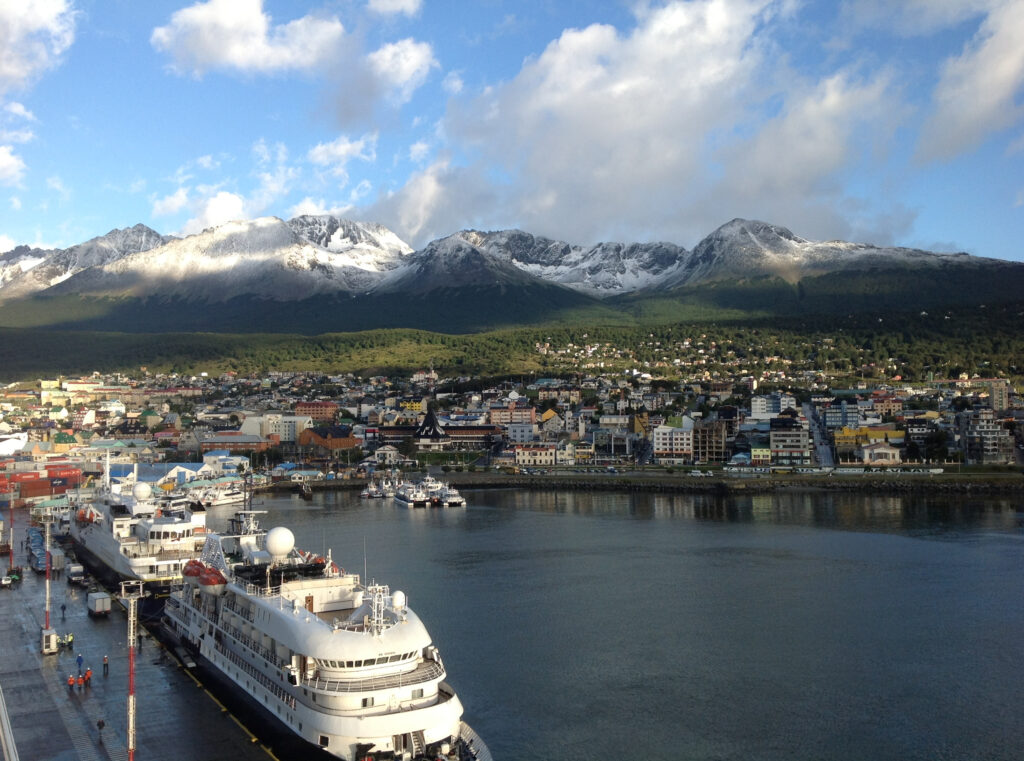
Geographical and Geological Features of Ushuaia
Geographical Features
1. Location:
• Ushuaia is situated on the southern tip of South America, on the island of Tierra del Fuego in Argentina. It lies on the shores of the Beagle Channel and is surrounded by the Martial Mountain range.
2. Coordinates:
• Latitude: 54.8°S
• Longitude: 68.3°W
• Ushuaia is often referred to as the southernmost city in the world.
3. Topography:
• The city is nestled in a natural amphitheater formed by the Andes Mountains. This creates a unique blend of coastal and mountainous landscapes.
• Elevation varies, with the city itself at around 6 meters (20 feet) above sea level and surrounding peaks reaching over 1,000 meters (3,280 feet).
4. Climate:
• Ushuaia experiences a subpolar oceanic climate, with cool summers and cold winters. Strong winds and unpredictable weather are common, influenced by its proximity to the Antarctic convergence.
5. Waterways:
• The Beagle Channel is a significant geographical feature, connecting the Atlantic and Pacific Oceans. It is known for its dramatic fjords, islands, and marine life.
• Nearby rivers, such as the Olivia and Pipo, drain into the channel.
Geological Features
1. Andean Mountain Range:
• Ushuaia is part of the southern Andes, known as the Fuegian Andes. These mountains are younger and more rugged than other sections of the Andes.
2. Tectonic Activity:
• The region is located near the South American and Scotia tectonic plates. This tectonic activity has shaped the area’s rugged topography and geological complexity.
• The Andes were formed by the subduction of the Nazca Plate beneath the South American Plate.
3. Glaciation:
• During the last Ice Age, glaciers sculpted the landscape, carving out U-shaped valleys, fjords, and moraines.
• Evidence of past glaciation includes glacial lakes, hanging valleys, and cirques.
4. Rocks and Soil:
• The geological composition includes sedimentary rocks, such as shale and sandstone, as well as metamorphic rocks like schist.
• Soils are often shallow and acidic due to the cold climate and glacial activity, supporting sparse vegetation.
5. Glaciers:
• Glaciers like Martial Glacier still exist near the city. These glaciers contribute to the area’s hydrology and are popular for trekking and tourism.
6. Coastal Features:
• The shoreline along the Beagle Channel is dotted with small bays, beaches, and rocky outcrops. The intertidal zone is rich in biodiversity, shaped by tides and cold ocean currents.
7. Volcanism:
• Though not volcanic today, volcanic activity played a role in the geological history of Tierra del Fuego, with ancient volcanic rocks found in the region.
Unique Natural Features
• Peat Bogs:
• Ushuaia is surrounded by extensive peat bogs, formed in the cold, wet climate. These bogs act as carbon sinks and support unique ecosystems.
• Forests:
• Subantarctic forests, primarily composed of lenga (Nothofagus pumilio) and guindo (Nothofagus betuloides) trees, cover much of the region.
These geographical and geological features make Ushuaia a striking and diverse location, blending mountain, forest, and oceanic landscapes in one of the most remote corners of the world.
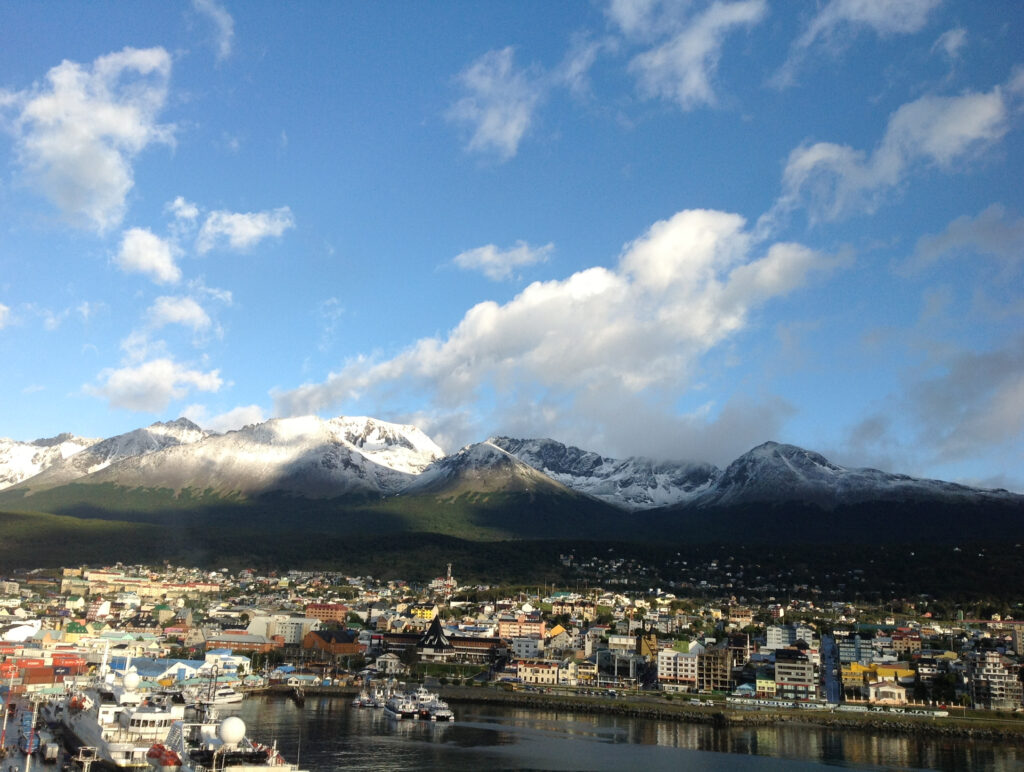
Historical Monuments and Tourist Attractions in Ushuaia
Historical Monuments
1. Old Prison of Ushuaia (Museo Marítimo y del Presidio de Ushuaia)
• Originally a penal colony, the prison housed Argentina’s most notorious criminals. It is now a museum that highlights the history of the prison, maritime heritage, Antarctic exploration, and local history.
2. End of the World Museum (Museo del Fin del Mundo)
• A museum dedicated to the history, culture, and natural environment of Tierra del Fuego, featuring exhibits on indigenous peoples, European explorers, and shipwrecks.
3. Government House (Casa de Gobierno)
• This early 20th-century building served as the administrative center of Tierra del Fuego. Its architecture and historical significance make it a landmark in the city.
4. Saint Christopher Shipwreck
• The remnants of the Saint Christopher, a tugboat that ran aground in the Beagle Channel in the 1950s, now stand as a historical monument and photo spot.
5. Anglican Mission Sites
• Remnants of the early Anglican missions that played a significant role in Ushuaia’s colonial history.
Natural Attractions
1. Tierra del Fuego National Park
• Known for its dramatic landscapes, hiking trails, and diverse wildlife, it marks the southern terminus of the Pan-American Highway.
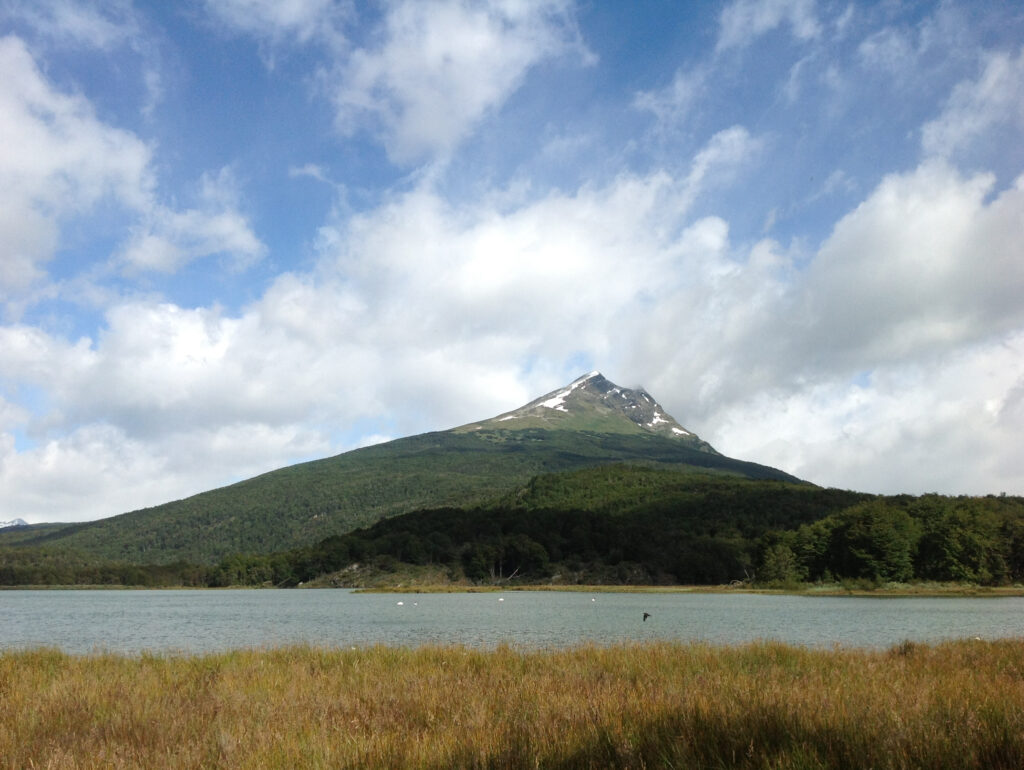
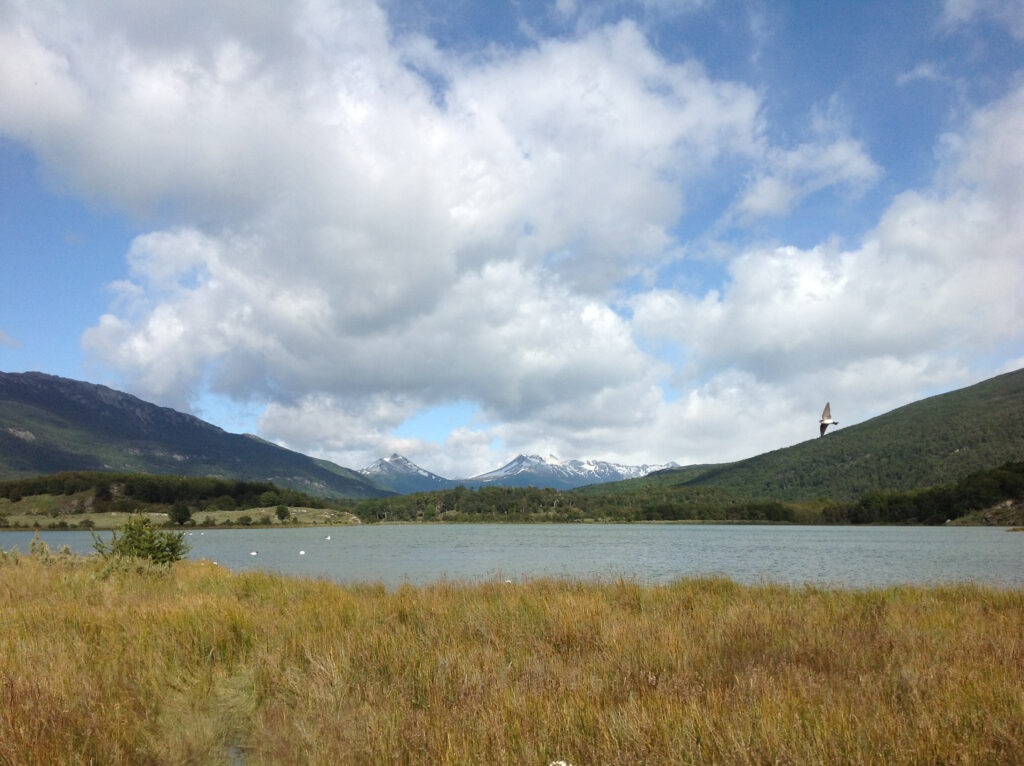
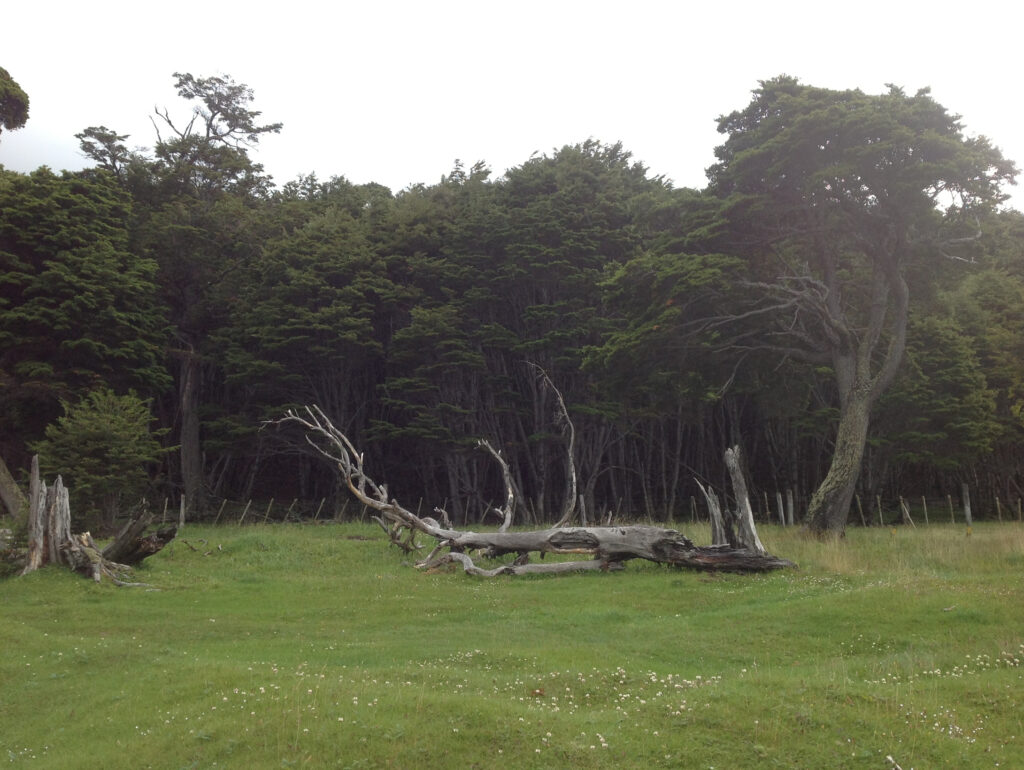
2. Beagle Channel
• A picturesque waterway offering boat tours to see glaciers, sea lions, penguins, and islands like Isla de los Lobos and Isla Martillo.
3. Martial Glacier
• A short hike or chairlift ride takes visitors to this glacier, offering panoramic views of Ushuaia and the Beagle Channel.
4. Laguna Esmeralda
• A turquoise glacial lake surrounded by forests and mountains, accessible via a scenic hike.
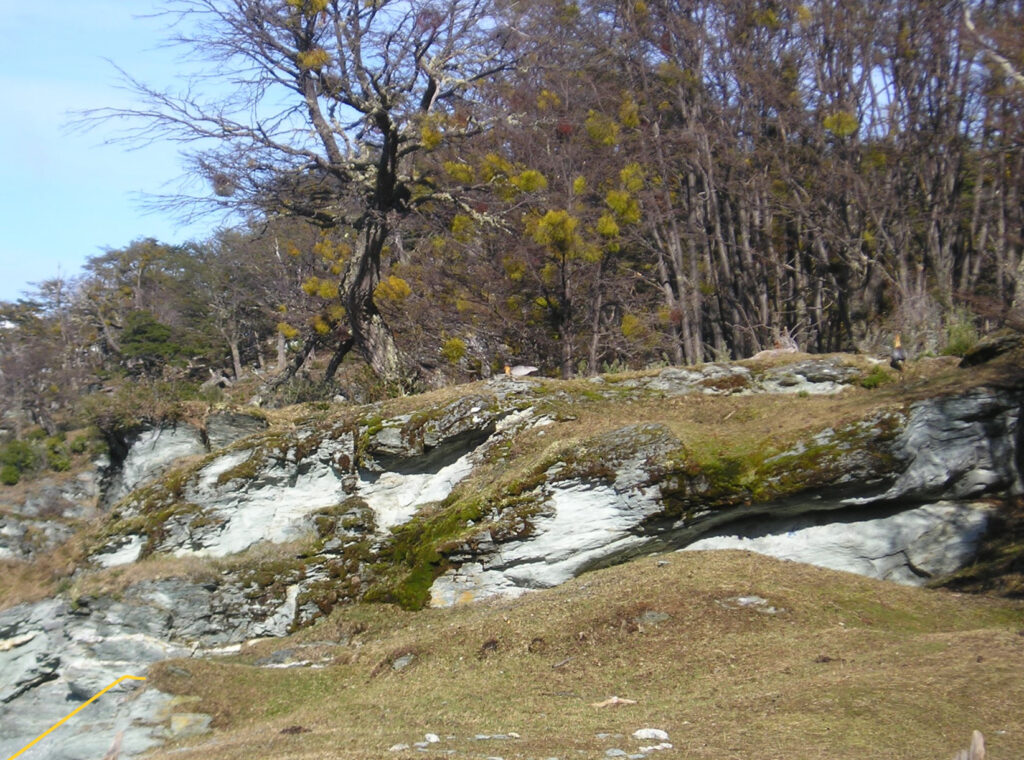
5. Lakes Fagnano and Escondido
• Stunning glacial lakes located near Ushuaia, popular for hiking, fishing, and photography.
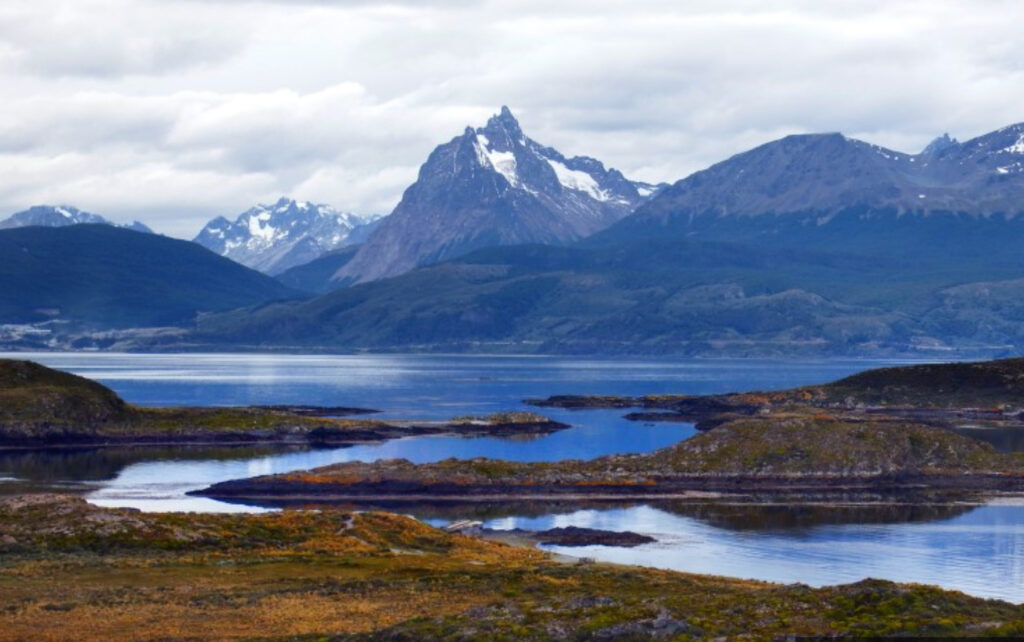
Cultural and Entertainment Attractions
1. Train to the End of the World (Tren del Fin del Mundo)
• A narrow-gauge railway originally used to transport prisoners. Now a scenic tourist train through Tierra del Fuego National Park.
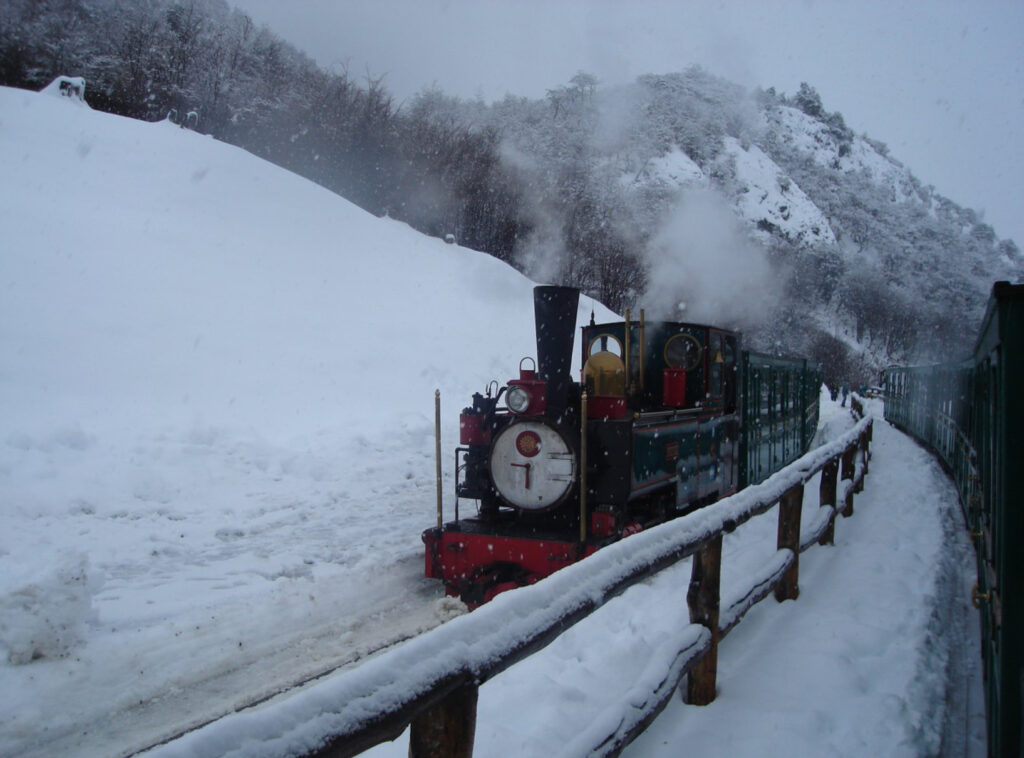
2. Yámana Museum (Museo Yámana)
• Dedicated to the history and culture of the Yámana people, the indigenous inhabitants of Tierra del Fuego.
3. Glaciar Vinciguerra and Ice Caves
• A challenging trek to an impressive glacier and unique ice caves, offering a raw natural experience.
4. Plaza Islas Malvinas
• A monument commemorating the Argentine soldiers who fought in the Falklands War (Guerra de las Malvinas).
5. Galería Temática Historia Fueguina
• An interactive museum showcasing the history of Tierra del Fuego, with lifelike figures and detailed exhibits.
Wildlife and Adventure Activities
1. Penguin Colonies at Isla Martillo
• Accessible via boat tours, this island is home to Magellanic and Gentoo penguins, a highlight for wildlife enthusiasts.
2. Estancia Harberton
• The oldest ranch in Tierra del Fuego, offering a glimpse into the life of early settlers and access to nearby islands.
3. Skiing at Cerro Castor
• A premier ski resort with excellent snow conditions, located just outside Ushuaia.
Unique Experiences
1. Antarctic Gateway
• Ushuaia is the primary departure point for cruises to Antarctica, offering a chance to explore the frozen continent.
2. Lighthouse at the End of the World (Les Eclaireurs Lighthouse)
• Often mistaken for Jules Verne’s famous “Lighthouse at the End of the World,” this iconic beacon is a symbol of Ushuaia.
These attractions highlight the blend of history, culture, and natural beauty that makes Ushuaia a unique destination at the edge of the world.
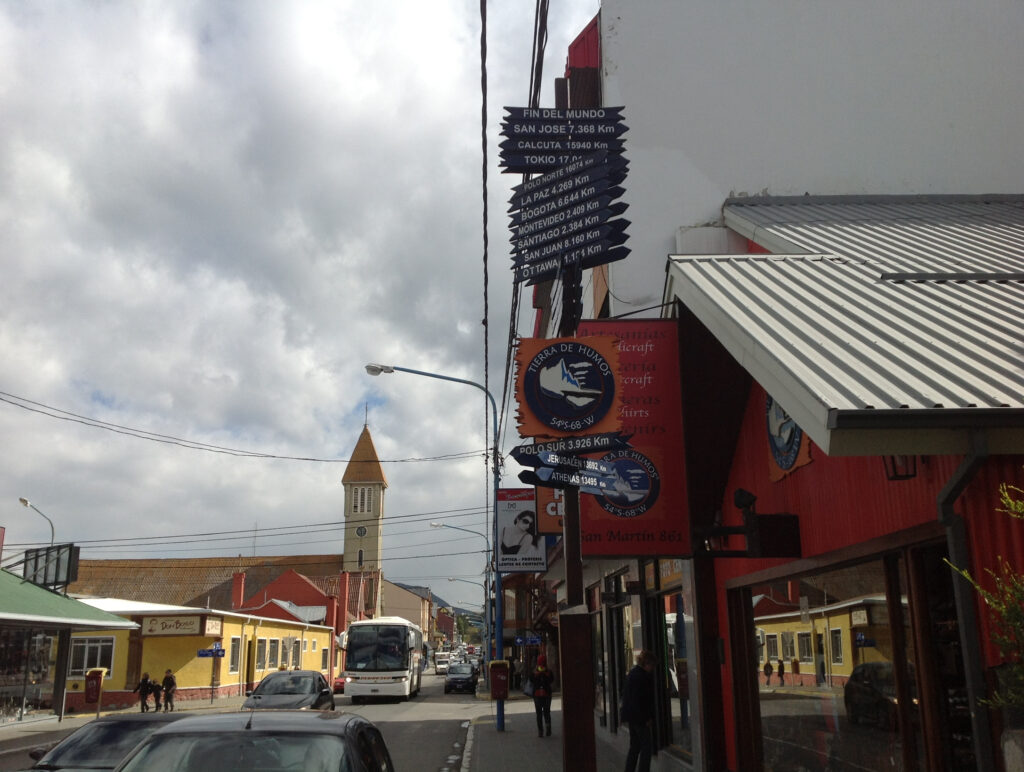
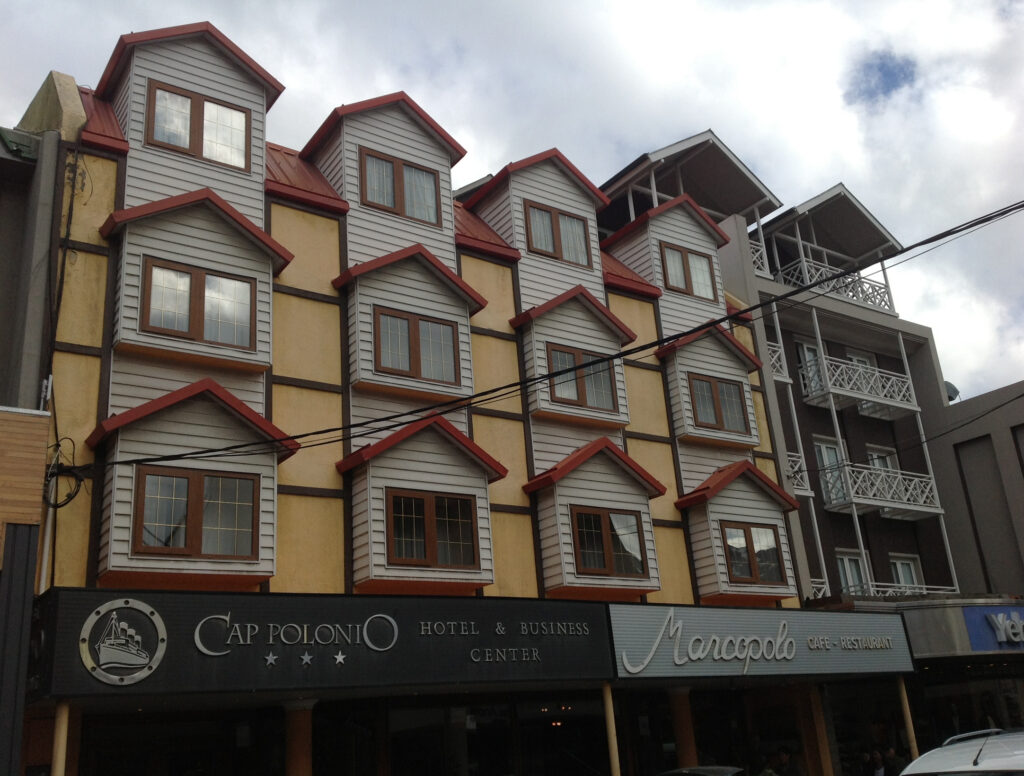
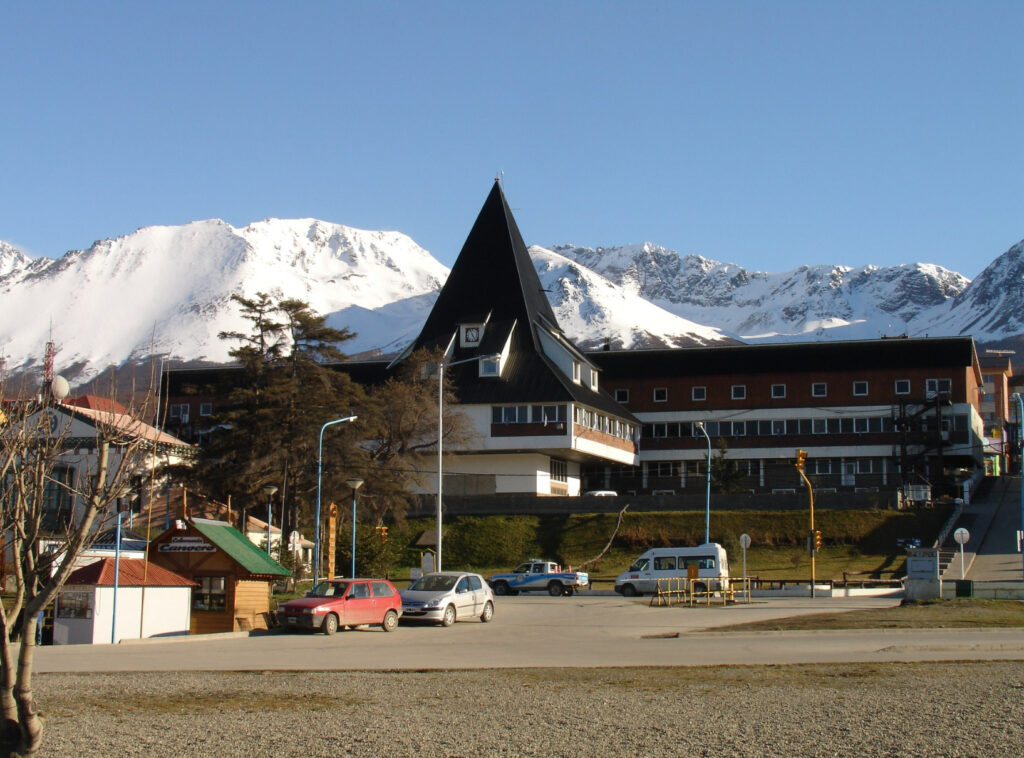
One-Day Itinerary for Visiting Ushuaia
Morning: History and Exploration
1. 8:00 AM – Breakfast at Tante Sara Café
• Start your day with a hearty Argentinian breakfast featuring medialunas (croissants), fresh coffee, and dulce de leche pastries. Tante Sara is a popular spot for locals and visitors alike.
2. 9:00 AM – Visit the Maritime Museum and Former Prison
• Explore the history of Ushuaia through exhibits about the old prison, Antarctic exploration, and maritime heritage. This site provides fascinating insights into the region’s past.
3. 11:00 AM – Walk to the Saint Christopher Shipwreck
• Stroll along the waterfront and visit the iconic wreck of the Saint Christopher. Enjoy the stunning views of the Beagle Channel and the surrounding mountains.
Midday: Nature and Scenic Beauty
4. 12:00 PM – Lunch at Kaupe
• Enjoy a gourmet meal featuring local specialties like centolla (king crab) or Patagonian lamb. Kaupe is renowned for its creative seafood dishes and spectacular views of the Beagle Channel.
5. 1:30 PM – Beagle Channel Boat Tour
• Embark on a 2-3 hour boat tour of the Beagle Channel. You’ll see the Les Eclaireurs Lighthouse, sea lions, and penguin colonies (seasonal). This is a must-do experience for appreciating Ushuaia’s natural beauty and wildlife.
Afternoon: Hiking and Relaxation
6. 4:00 PM – Short Hike at Tierra del Fuego National Park
• Head to the national park (about 20 minutes by car). Choose a short trail, such as the Sendero de la Bahía Lapataia, which offers breathtaking views of the bay and surrounding mountains.
7. 5:30 PM – Café Break at Ramos Generales El Almacén
• Enjoy a mid-afternoon café break at this charming historical café. Try a slice of tarta de frutos del bosque (Patagonian berry tart) paired with hot chocolate or tea.
Evening: Local Flavors and Nightlife
8. 7:00 PM – Dinner at La Estancia Parrilla
• Indulge in a classic Patagonian barbecue (asado), featuring grilled lamb, sausages, and a variety of meats. Pair your meal with a glass of Argentine Malbec wine for the perfect culinary experience.
9. 8:30 PM – Evening Walk Along the Waterfront
• Conclude your day with a leisurely walk along the waterfront promenade. Admire the city lights reflecting on the Beagle Channel and take in the crisp Patagonian air.
This itinerary blends history, nature, and culinary delights, giving you a well-rounded experience of Ushuaia in just one day.
